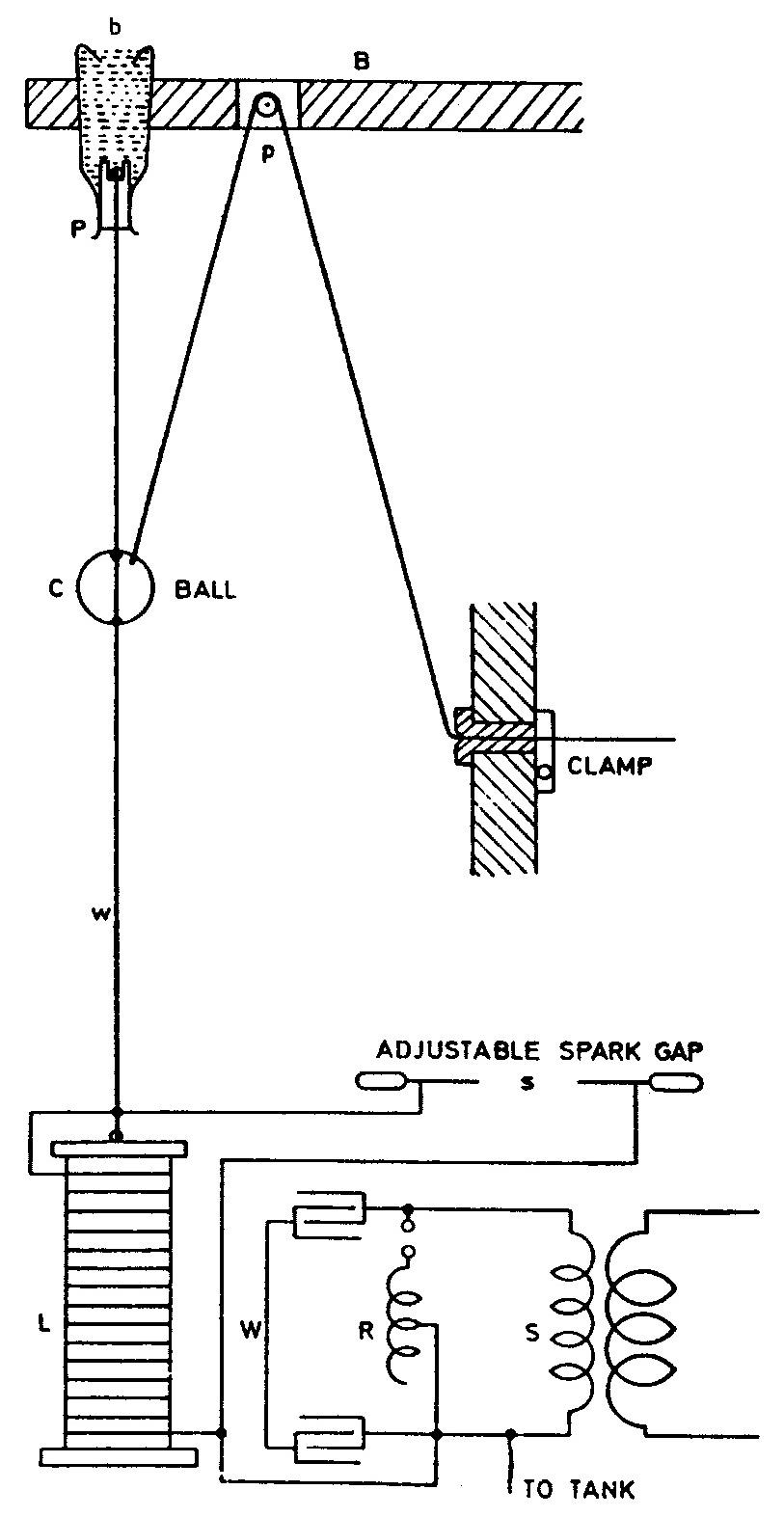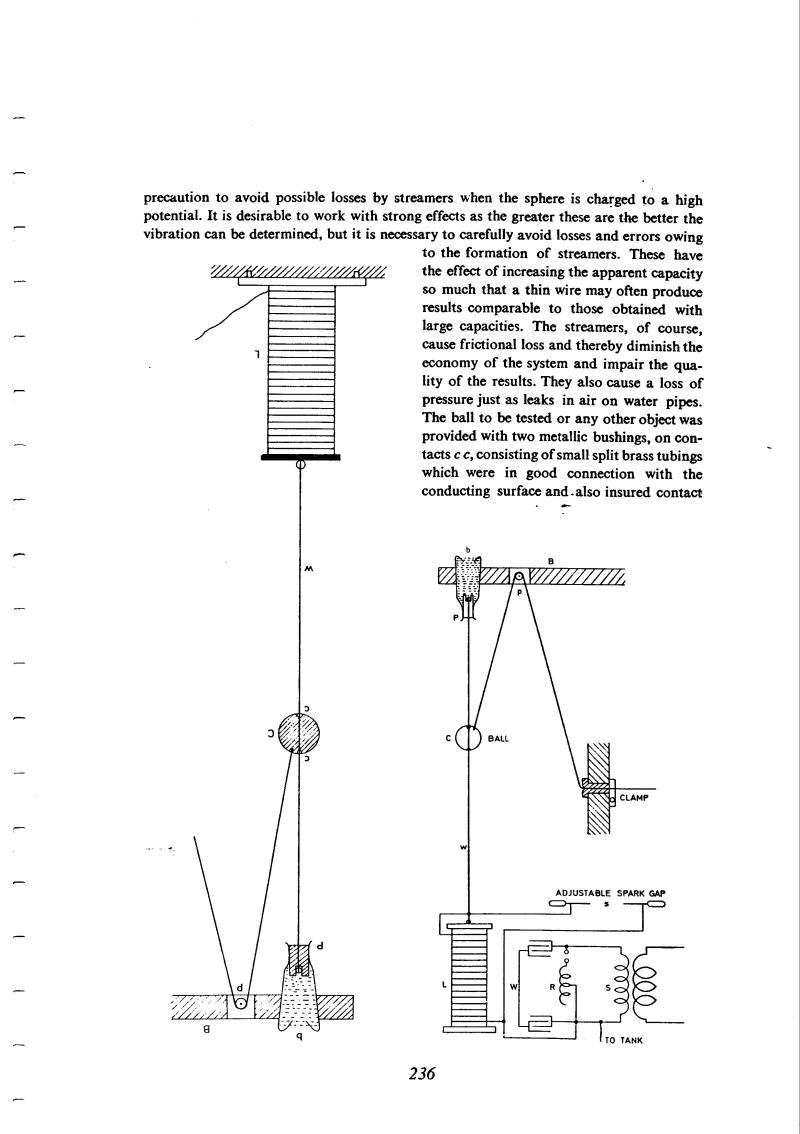
Nikola Tesla Books
precaution to avoid possible losses by streamers when the sphere is charged to a high potential. It is desirable to work with strong effects as the greater these are the better the vibration can be determined, but it is necessary to carefully avoid losses and errors owing to the formation of streamers. These have the effect of increasing the apparent capacity so much that a thin wire may often produce results comparable to those obtained with large capacities. The streamers, of course, cause frictional loss and thereby diminish the economy of the system and impair the quality of the results. They also cause a loss of pressure just as leaks in air on water pipes. The ball to be tested or any other object was provided with two metallic bushings, on contacts c c, consisting of small split brass tubings which were in good connection with the conducting surface and also insured contact
236
October 23
In further experiments to determine change of capacity with height Tesla uses an apparatus similar to that of the previous day. As far as can be judged, the coupling between the oscillator and the measuring circuit (coil with elevated ball) was loose. The lower terminal of the latter was connected with a condenser of the oscillator circuit. Loose coupling is evidenced by the relatively weak sparks obtained across the air gap of coil L (see figure) in comparison with the sparks obtained when a similar coil was excited by the secondary of the oscillator, tightly coupled to the primary (as for example on October 4th and 5th). Under these conditions the spark oscillator would generate a single frequency, determined by the parameters of the oscillatory circuit with the spark gap.
October 23-24
He performs the experiment outside the laboratory to determine the sphere capacitance at various elevations above the ground.
The apparatus is similar to the one from the previous day and consists of the arcing oscillator and a measurement circuit. The coupling between oscillator and measurement circuit (coil with the elevated sphere) is according to our estimate small. The lower terminal of the measurement circuit is connected with one of the terminals of the oscillator capacitor. The indication of a weak coupling is the relatively small sparks in the arcing gap of coil (see figure) in comparison with sparks when a similar coil excited the oscillator secondary in strong coupling with the primary (as for example on October 4 and 5). Under these conditions the arcing oscillator operates at one frequency determined by the diameter of the oscillating circuit's coil with the spark gap.
In parallel with the coil L a vertical wire is connected with the sphere C. The sphere can be moved along the wire, and it is supported by the method shown in the picture.
The resonant state of coil L is judged on the basis of the spark across the adjustable arc-gap. This method of resonant state determination has short-comings because it requires relatively strong excitation. Strong excitation leads to current streamers which in turn change the circuit parameters. Tesla claims that current streamers change the capacitance of thin wire so that it causes effects comparable with those created by large capacitors. That is why he took precautions to reduce the occurance of current streamers when designing the apparatus. He paid particular attention to the arcing device for registration of resonance by introducing minimal capacitance in the coil circuit.
He adjusts the oscillator frequency in steps by connecting a certain number of capacitor jars (each jar had a capacitance of approximately 800cm). The fine frequency adjustment was performed by variation of the number of turns of the regulating coil. The sphere capacitance was measured indirectly. First, the resonant frequency of the coil L was determined by means of the arcing device for resonance measurement. Then a vertical wire Ï was connected along which sphere C slides. Through this method a second resonant frequency was determined. Finally, the resonant frequency was determined when the measurement circuit consisted of coil L, vertical wire Ï and a sphere C (at various heights). From three known frequencies and known coil L inductance, the sphere capacitance values are determined at various elevations.
Tesla performed a number of measurements for the purpose of checking first one then a second value of the capacitance in the primary circuit but he did not perform any calculations.



